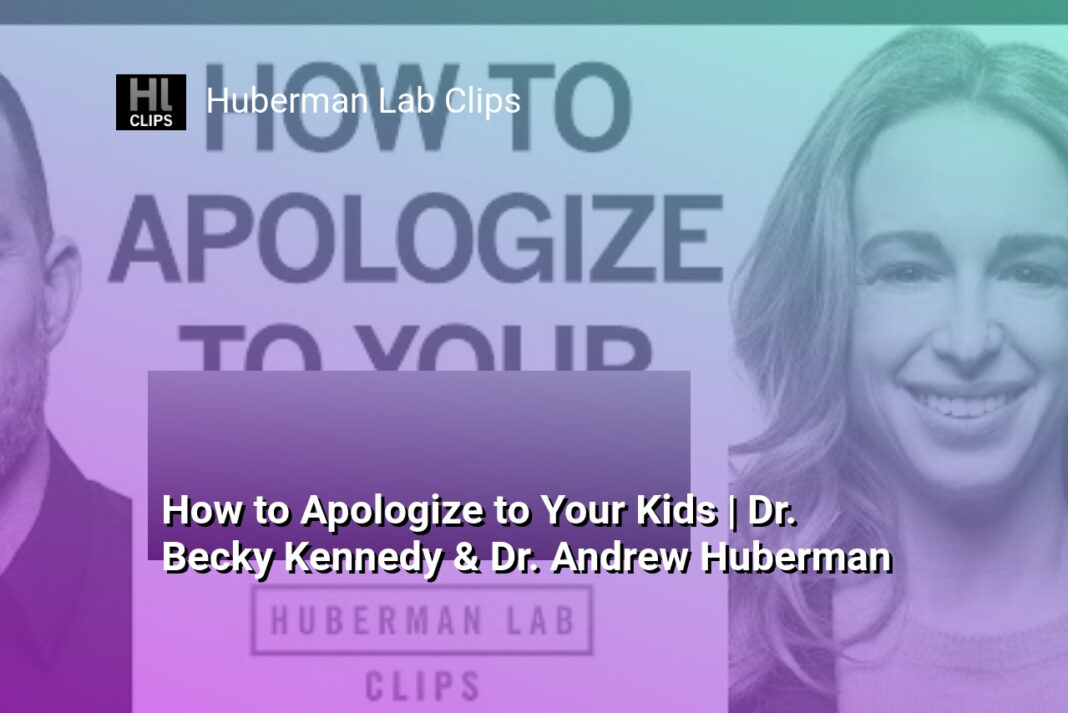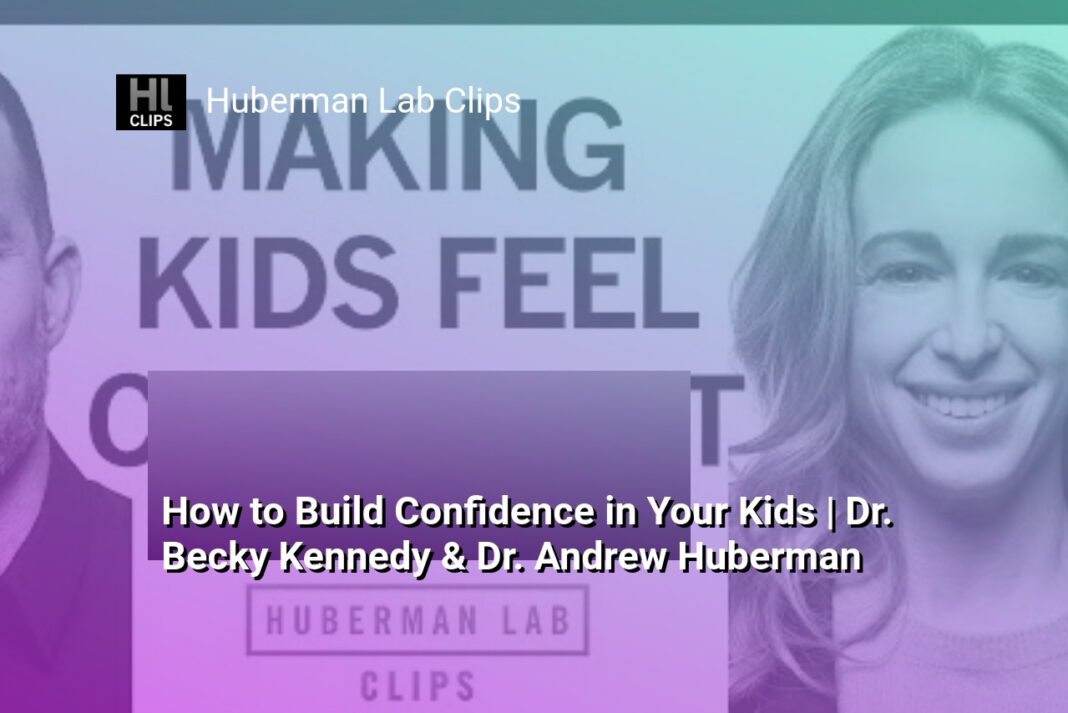The Bottom Line:
- The main theme of the text is the importance of repair and connection in addressing trauma and emotional processing, especially in the context of parent-child relationships.
- The text emphasizes that trauma is not defined by the event itself, but by how it is processed and experienced internally, often in a state of aloneness or disconnection.
- The text highlights the crucial role of parental repair and connection in helping children navigate and process difficult emotions, rather than resorting to self-blame or self-doubt.
- The text provides practical guidance on how parents can effectively repair and reconnect with their children after emotional outbursts or conflicts, focusing on self-reflection, empathy, and simple, but powerful, statements like “I believe you” and “It’s not your fault.”
- The text acknowledges the real-world challenges and dynamics of parenting, emphasizing the need for accessible, “real-time” tools and strategies to navigate these complex situations effectively.
The Relational Nature of Trauma
The Relational Nature of Trauma
Trauma is not defined solely by the events that occur, but rather by how those events are processed and experienced. According to Gabor Mate’s definition, trauma is “not what happens to you; it’s what happens inside of you.” This highlights the inherent relational nature of trauma, where events with high emotionality become traumatic when they are processed in isolation or aloneness.
The Importance of Repair
The relational aspect of trauma is also linked to the concept of responsibility. When a child experiences a traumatic event, such as a parent yelling at them, the child is faced with a dilemma. They cannot view their parent, the source of safety and attachment, as the source of danger and threat. To maintain a sense of control and safety, the child may resort to self-blame or self-doubt, leading to long-lasting consequences in adulthood.
The Role of Repair in Healing
The process of repair is crucial in addressing the relational nature of trauma. When a parent acknowledges their mistake, apologizes, and creates a safe space for the child to express their feelings, it can help the child regulate their emotions and feel heard and understood. This contrasts with situations where the parent does not engage in repair, leaving the child to navigate the aftermath alone, further reinforcing the sense of aloneness and self-blame.
The key to effective repair is for the parent to first address their own feelings and take responsibility for their actions, separating their identity from their behavior. This allows the parent to approach the child with genuine empathy and a desire to provide a restorative experience, rather than seeking the child’s forgiveness or validation. Simple yet powerful statements, such as “I believe you” and “It’s never your fault when I yell,” can help the child feel validated and safe, laying the foundation for healing and growth.
Ultimately, the relational nature of trauma underscores the importance of fostering safe, nurturing connections and the willingness to engage in the difficult but necessary work of repair. By acknowledging the impact of our actions and creating opportunities for understanding and restoration, we can help break the cycle of trauma and promote resilience in ourselves and our loved ones.
The Importance of Repair
Embracing Responsibility and Facilitating Repair
The process of repair is crucial in addressing the impact of trauma, particularly in the context of parent-child relationships. When a parent lashes out in a moment of frustration, the child is left in a state of confusion and vulnerability, questioning the safety and reliability of their primary caregiver. However, it is not the event itself that determines the traumatic impact, but rather how the child processes it.
The Power of Acknowledgment and Validation
The first step in the repair process is for the parent to acknowledge the child’s experience and validate their feelings. Saying “I believe you” can be a powerful statement, conveying that the parent recognizes the child’s perspective and is willing to listen without judgment. This simple yet profound gesture can help the child feel heard and understood, laying the foundation for the repair process.
Repairing with the Self Before Repairing with the Child
Before attempting to repair the relationship with the child, the parent must first address their own internal landscape. By separating their identity from their behavior and recognizing that they are a “good parent having a hard time,” the parent can cultivate self-compassion and create the necessary emotional space to engage in a meaningful repair process. This self-reflection and self-acceptance are crucial, as the child will be able to sense the parent’s sincerity and emotional availability.
The actual apology can be straightforward, such as “I’m sorry I yelled. Just like you, I’m working on managing my emotions, and I’ll try to stay calm next time.” The key is to take responsibility for the behavior, acknowledge the child’s experience, and commit to doing better in the future. Avoiding blame-shifting or minimizing the child’s feelings is essential for the apology to be effective.
Ultimately, the goal of the repair process is not to seek the child’s forgiveness or to make the parent feel better, but to provide the child with a safe and nurturing environment where they can process the event and regain a sense of trust and security in their relationship with the parent. By embracing responsibility and facilitating genuine repair, parents can help their children navigate the complexities of trauma and foster resilience.
Navigating Challenging Parenting Moments
Navigating Challenging Parenting Moments
Parenting can be a rewarding yet challenging journey, and it’s important to acknowledge that even the most dedicated and loving parents can experience moments of frustration or anger. The key is how we navigate these challenging situations and use them as opportunities for growth and repair.
Repairing After Outbursts
When a parent loses their temper and yells at their child, it can be a deeply unsettling experience for both parties. The child may feel confused, hurt, and uncertain about their safety and the stability of the relationship. As a parent, it’s crucial to take responsibility for your actions and engage in a genuine process of repair.
The first step is to repair the relationship with yourself. Separate your identity as a good parent from the specific behavior you’re not proud of. Acknowledge that you had a moment of difficulty, but don’t let that define you as a person or a parent. This internal work will allow you to show up differently in the repair process with your child.
Effective Apologies and Validation
When approaching your child after an outburst, start by validating their experience. Say something like, “I believe you. That must have been really scary/upsetting when I yelled.” This simple statement can go a long way in helping the child feel heard and understood.
Avoid apologies that include justifications or blame-shifting. A genuine apology should be straightforward: “I’m sorry I yelled. That was not your fault.” You can also share your intention to do better in the future, such as, “I’m still learning to manage my emotions, and I’m going to try my best to stay calm next time.”
The key is to create a safe space for the child to express their feelings, without the burden of trying to make the parent feel better. This allows the child to feel truly seen and validated, which is essential for rebuilding trust and connection.
Navigating the real-world complexities of parenting can be challenging, but by focusing on self-repair, validation, and genuine apologies, you can create opportunities for growth and strengthen the parent-child bond, even in the midst of difficult moments.
Separating Identity from Behavior
Repairing the Parent-Child Relationship
The key to separating identity from behavior in the context of parenting is to recognize that our actions as parents do not define who we are as individuals. Even when we make mistakes, such as yelling at our children, we can still be good parents. The first step in the repair process is to address the issue within ourselves.
Repairing with Ourselves
Before we can effectively repair the relationship with our child, we need to repair the relationship with ourselves. This involves acknowledging that we are good parents who sometimes struggle with difficult emotions or situations. By separating our identity from our behavior, we can avoid collapsing the two and falling into the trap of seeing ourselves as “monsters” or “bad parents” forever.
Repairing with the Child
Once we have addressed the issue within ourselves, we can then focus on repairing the relationship with our child. This often starts with a simple, genuine apology, such as “I’m sorry I yelled.” It’s important to avoid adding any “buts” or justifications, as this can undermine the sincerity of the apology.
Additionally, it’s crucial to validate the child’s experience by saying something like “I believe you” or “It’s never your fault when I yell.” This helps to “snatch the self-blame out of the child’s body” and reassure them that the responsibility lies with the parent, not the child.
Finally, it can be helpful to offer a concrete plan for the future, such as “Next time, I’m going to try to stay calm even when I’m frustrated.” This demonstrates a commitment to change and a desire to improve the situation going forward.
The key is to approach the repair process with empathy, humility, and a genuine desire to reconnect with the child. By separating our identity from our behavior and focusing on the relational aspects of the situation, we can create an environment of trust, safety, and mutual understanding.
Real-Time Tools for Effective Apologies
Crafting Meaningful Apologies in the Real World
In the real-world landscape of parenting, family, and life, things can happen quickly, and the dynamics can be complex. When it comes to making amends after a heated moment, the ideal apology seen on social media may not always be feasible. What’s important is to have a set of real-time tools that can help us navigate these situations effectively.
Repairing with Ourselves First
The first step in the repair process is to address the internal landscape. Before we can meaningfully apologize to our child, we need to repair our own relationship with ourselves. This involves separating our identity from our behavior and acknowledging that we are good parents who sometimes make mistakes. By doing this inner work, we can then show up in a different way when engaging with our child.
The Power of Simple, Authentic Apologies
When it comes to the actual apology, simplicity and authenticity are key. Even if we don’t have the time or emotional capacity for an elaborate apology, a straightforward “I’m sorry I yelled” can go a long way. The important thing is to validate the child’s experience by saying “I believe you” and to avoid making excuses or shifting blame. Additionally, mentioning that you’re working on managing your emotions and will try to stay calm in the future can add a layer of reassurance and commitment to growth.
The real-world landscape of parenting can be challenging, but by having a repertoire of real-time tools for effective apologies, we can navigate these situations with empathy, responsibility, and a focus on repair. The key is to prioritize the child’s sense of safety and connection, even in the midst of our own emotional turmoil.





